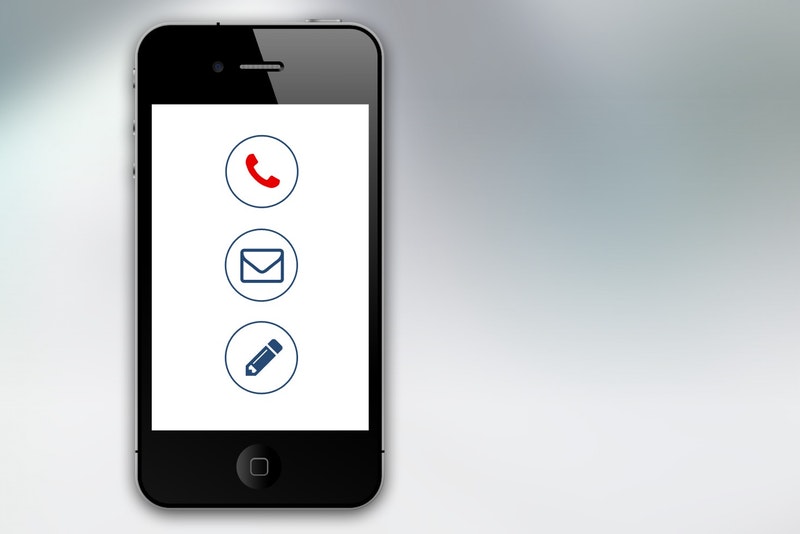Updated 2021 April 7
“Don’t let the perfect be the enemy of good”

Part 4 of a 4 part series….
When I work with clients I start out with a fact sheet that they fill in or I walk them through it and fill it out myself. I find that simply asking what would you like on your website is overwhelming and it can create a writer's block paralysis staring at a blank sheet. By the same token if you have an existing website the thought of revamping the site can be extremely daunting, so let's break it down into sections because those are manageable chunks. Remember you don't necessarily have to revamp your site with a big bang, you can make incremental changes and they all add up.
I have covered 'About Us', 'Services', and 'FAQ' the previous weeks and will be covering “Contact Us” this week as the final part of this series as I break the website sections into manageable chunks.
The contact us page is probably the easiest page for me in the sense that the information is very basic and you don’t need to think to much about where to get the information. What I mean by that is is when you are writing the content for your other pages you have to describe what you do, who you are, and potentially create and answer question for your frequently asked questions, that takes a lot of thought because you are writing complete sentences and bullet lists. However with contact info it just is, you known your phone number, email, and location, and then bam done, with very little thinking.
If that is the only information you include on your contact us page yes it is going to be a basic page, so if you just need to get the website out then please by all means go with something basic. Remember you can always revise to make the page more robust.
“Don’t let the perfect be the enemy of good”
You want customers and potential customers to contact you so it is in your business’ best interest to have your contact information everywhere so it is easy to find. Humans tend to be lazy don’t so work with that tendency and capitalize on it, make it so easy for them to contact you that they don’t leave annoyed that they couldn’t find anything.
A pet peeve of mine is not being able to find contact information for a business. I like to make sure that this information or at least a subset (aka the basics) is included in the footer of each page in addition to the contact page itself. I also recommend that within the main navigation there is an entry for ‘Contact Us’

Once you have the basics down you can expand and provide more information that is relevant to your business. Items that you want to include maybe:
In addition to adding additional information you can change the phrasing on this page, your navigation text may say ‘Contact Us’ but that doesn’t mean that you have to use only that phrase. Bourn Creative suggests changing your headline on this page from “Contact Us” headline, with “How Can We Help?” or “What can we do for you?”.
Another place where you can change things up can be found on buttons. Rather than having the rather generic text ‘Submit’ why not update that to say:

Lets define responsive design (also known as responsive web design)
"Responsive web design (RWD)
is an approach to web design that makes web pages render well on a variety of devices and window or screen sizes. ”
If your are creating a new web site, this section should just be expected, regardless if you are using a content management system like WordPress or have a web developer creating all your HTML/CSS files, the design default should be in a responsive framework. However if you have an existing website this is very important and an upgrade you will want to make.
“More than 60 percent of all internet browsing is happening on mobile devices. If your website isn’t responsive, it isn’t easy to use and visitors will leave. If your website contact page and contact form aren’t responsive and easy to use on mobile devices, you risk losing out on new business, new clients, new customers, and the opportunity to create new fans. ”
Another way to make your page easy to use is to have ‘clickable’ elements. We are are all used to seeing the ‘submit’ button on a contact form, but there are other elements that can be ‘clickable’ for the convenience of your customers and potential customers. Tim Parker from Business Know How includes this information on his “What Should You Put on Your Website” article.
“Your Contact Information- address with a clickable Google maps link if you have a physical presence and clickable phone number so people can easily get in touch with you.”
What is the value of that ‘clickable’ element? It eliminates an extra step to completing an action if you customer is using their mobile phone. If you have your phone number listed in plain text only then the customer is going to have to (1) try to highlight and copy paste into their phone keypad (2) try to remember the number to key in manually or (3) write it down and then key it in manually. At any point your customer could have problems get frustrated and move on. However if that element is clickable your phone number is brought up on the keypad and they only have to touch the green phone icon to complete the call. Easy Breezy Lemon Squeezy.
The same concept can be used for an email button or icon. Some sites (mine included) don’t have contact form because it can be cumbersome to fill in the various fields and tab to the next or use a mouse click. By using a clickable email button or icon the customer’s email of choice (gmail, outlook, etc.) opened with your email address pre-filled with your email address. It is right there and started so it is easy for them to complete and request more information and describe what they want before they are distracted by something else.
And if you would like to skip the back and forth to find a convenient time for a meeting, check out my schedule on Calendly! Schedule Now
NOTE: I am not being paid for my mentions of people, articles, products, or books I used above nor do I receive referral compensation. The links I provide are for your
convenience only.
Unless otherwise indicated I sourced the links provided while researching a post. Links that I provide at the request of another person/business will be noted, and if I am paid to
provide a link I will disclose that information on the post in which it is applicable. All opinions are mine, regardless of whether or not I am compensated, and are not in any way
influenced by the requesting party.
DISCLAIMER: This advice is general in nature and not to be taken as personal professional advice. This blog does not provide legal advice if you need
legal advice, please contact an attorney directly.